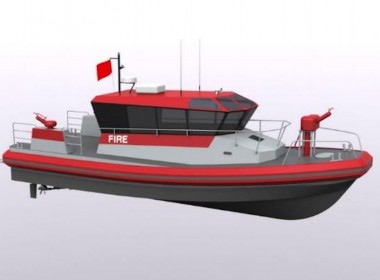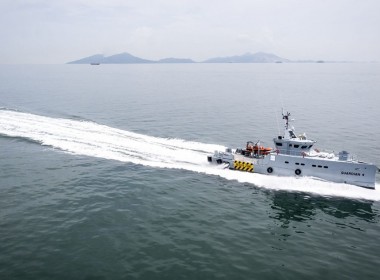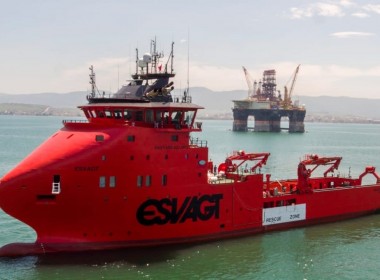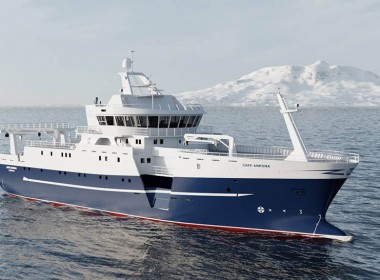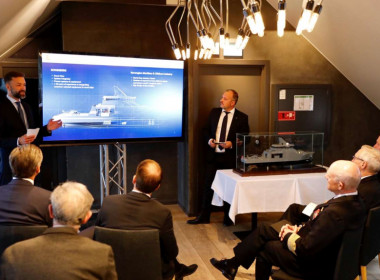VESSEL REVIEW | Lightning – UK builder unveils multi-role security watercraft prototype

UK-based manufacturer Ultimate Boats has unveiled a new watercraft prototype designed for a range of maritime security operations.
Ordered by a local operator, the rigid inflatable boat (RIB), which has been named Lightning, is capable of transporting fully equipped troops at high speeds for a range of maritime security missions.
“Our primary requirement for the vessel was a highly versatile and reliable platform, adept in performing a range of tactical operations across diverse maritime environments,” the operator told Baird Maritime. “We needed a craft that excelled not only in speed and manoeuvrability, but also in stability, especially crucial in challenging sea conditions for effective interception and boarding operations.”
The operator remarked that the vessel’s design includes advanced navigation and communication systems, essential for real-time operational effectiveness in various scenarios. A strong emphasis was also placed on crew safety and comfort, particularly for extended missions, ensuring operational readiness during prolonged engagements. In essence, the brief called for a robust, multi-role craft, uniquely tailored to seamlessly adapt to the evolving demands of modern maritime operations, with a special focus on interception and boarding capabilities.
The vessel was required to seamlessly integrate with various assets and units, reinforcing the need for interoperability and networked capabilities. The brief was to create not just a boat but a tactical asset that would extend the capabilities of special forces and maritime security operators in open seas as well as coastal and littoral zones. It can serve as a fast launchable tender to a mothership, easily transitioning to active roles in maritime environments. Its design facilitates rapid deployment for maritime interdiction.
“One of the most unique aspects of the watercraft is its proprietary hull technology, which was developed by Ultimate Boats’ chief engineer John Moxham and derived from advanced aeronautical and fluid dynamics principles,” added Tom Ryall, Managing Director of Defence for Ultimate Boats’ parent company ExoTechnologies. “This innovation significantly reduces cavitation, enhances propulsion efficiency, and ensures unmatched agility and manoeuvrability. Additionally, the vessel is equipped with modern navigational systems and shock-mitigation seating, enhancing both operational effectiveness and crew comfort.”
“We believe the Moxham hull technology is a critical factor in enhancing both manoeuvrability and stability during high-speed interception and boarding operations,” said the operator. “The advanced design ensures the coxswain’s ability to maintain a visual on the horizon, crucial for operational awareness, and enables the vessel to turn flat and under control at speed, a vital attribute in tactical scenarios.”
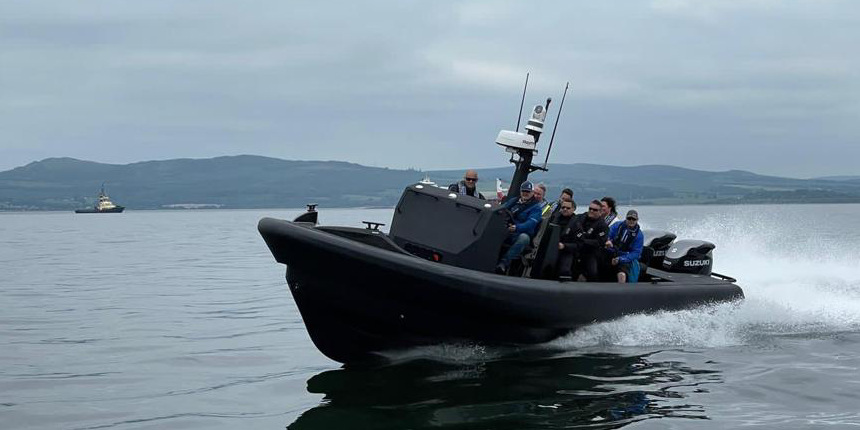
The operator added that the use of ExoTechnologies’ proprietary recyclable composite material in the craft’s construction not only surpasses the performance of conventional materials but also promotes sustainability.
Ryall said the craft can be adapted to a wide range of military and law enforcement mission profiles, having been designed with input from veterans and specialists. Duties will include high-risk maritime interdiction, counter-terrorism, strategic reconnaissance, direct action raids, border patrols, and search and rescue (SAR). Also, the vessel is able to seamlessly shift roles and integrate with other units, making it a versatile multi-role platform.
“This makes it not just a vessel, but a strategic asset, tailored for the complexities and unpredictability of modern maritime operations,” commented Ryall. “Therefore, one of the biggest challenges in designing it was balancing high-speed performance with uncompromised stability in diverse sea conditions. Achieving this required innovative approaches in naval architecture, particularly in the development of the hull form.”
The Moxham hull design was identified as a solution to the challenge, but configuring it to reduce cavitation and maintain propulsion efficiency while enhancing manoeuvrability required further development.
Another major challenge identified by Ultimate Boats was integrating state-of-the-art technology and sophisticated systems into a platform that is inherently limited by size and weight. Ensuring that the vessel remained agile and responsive, while being equipped with advanced navigational, communication, and operational systems, required meticulous planning and engineering.
“Designing a vessel that could adapt to a wide range of tactical operations presented its own set of challenges,” added Ryall. “We had to consider various mission profiles and ensure that the vessel could be quickly reconfigured for different operational requirements without compromising on performance or safety. Lastly, the need to ensure crew comfort and safety, especially during prolonged missions, demanded an ergonomic design that could withstand harsh maritime conditions. This involved not only the physical design of the craft but also the integration of advanced shock-mitigation seating and other crew protection features.”
For Ultimate Boats, the design process entailed technical, operational, and environmental considerations as well as adhering to the stringent standards expected in tactical and special forces operations.
“The construction presented distinct challenges, chiefly related to materialising the advanced design into a functional, robust craft,” Ryall told Baird Maritime. “One of the primary challenges was the integration of our proprietary Moxham hull technology into the build process.This advanced hull design required precision engineering and fabrication techniques to ensure its unique characteristics were flawlessly executed, particularly in reducing cavitation and enhancing hydrodynamic efficiency.”
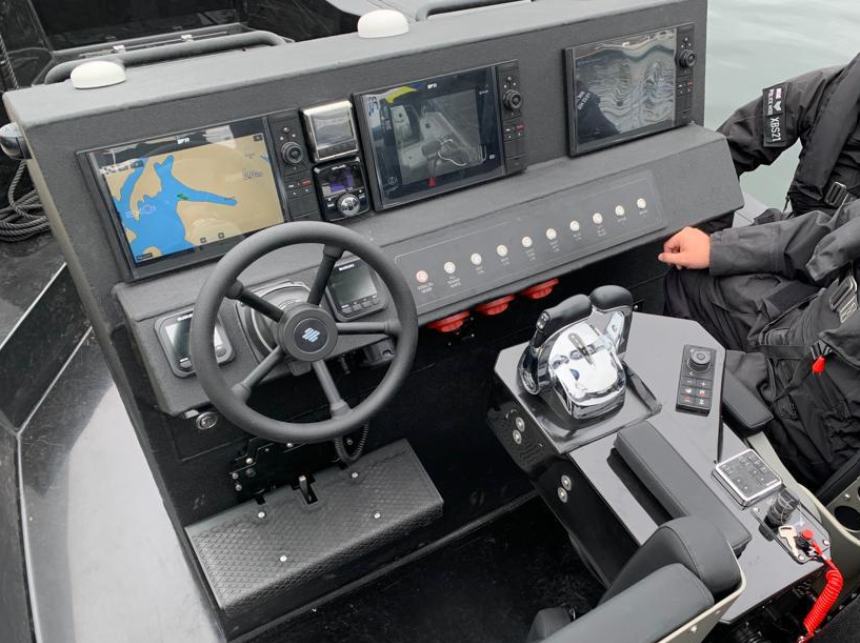
Ryall added that another significant challenge was incorporating the array of advanced technological systems without compromising the vessel’s integrity or performance. Balancing the installation of navigation, communication, and operational systems within the confined space of a RIB necessitated innovative solutions in spatial design and weight distribution.
“A critical aspect of the build was utilising DANU, our patented, fully recyclable composite material. Incorporating DANU posed a unique challenge, balancing the need for durability and lightweight agility essential for high-speed operations while adhering to our commitment to sustainability.”
Ensuring the vessel’s durability while maintaining its high-speed capabilities was also a key challenge. Ultimate Boats needed to select and work with materials that provided the requisite strength and resilience, especially for components exposed to harsh marine environments, while keeping the vessel lightweight and agile.
“Additionally, achieving the high standards of crew safety and comfort set out in the design brief required meticulous craftsmanship. This entailed integrating advanced shock-mitigation seating and ergonomic design elements within the cabin and crew areas, ensuring these features were both functional and durable under operational stress.”
The design and construction of the new tactical watercraft provide Ultimate Boats with insights that the company was eager to apply to future newbuilding projects.
“A key learning was the importance of integrating cutting-edge materials like our patented composite material into our designs,” said Ryall. “The use of the material not only enhanced the vessel’s performance but also aligned with our commitment to sustainability. This experience validated our belief in the potential of advanced, recyclable materials in marine construction.”
For Ultimate Boats, the process also highlighted the value of rigorous testing and prototyping, especially when integrating novel technologies and designs. Also, collaborating closely with end-users during the design and construction phases proved immensely beneficial. This collaboration ensured that the vessel met the real-world operational needs of tactical forces, providing the builder with direct insights into how its designs are utilised in the field.
The propulsion setup includes two Suzuki DF350A outboard engines with counter-rotating propellers to provide improved thrust and stability crucial for high transit speeds and precise manoeuvres. A comprehensive electronics package includes a Raymarine radar with target identification and collision avoidance capabilities, a chart plotter, and a Teledyne FLIR thermal imaging camera.
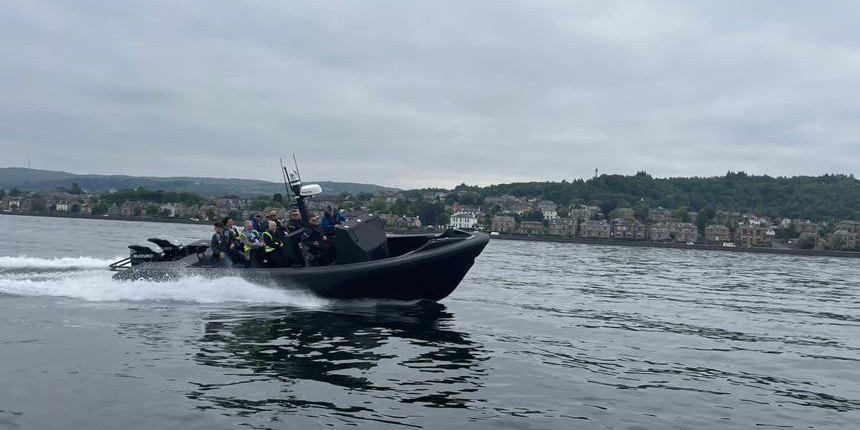
“What sets the electronics setup apart is not just the choice of high-end components but the way these systems integrate with our vessel’s design,” Ryall told Baird Maritime. “There are also SHOXS suspension seats and a tactical helm console. A SHOXS deck track system enables quick reconfiguration of the wheelhouse and deck layouts to suit various mission requirements.”
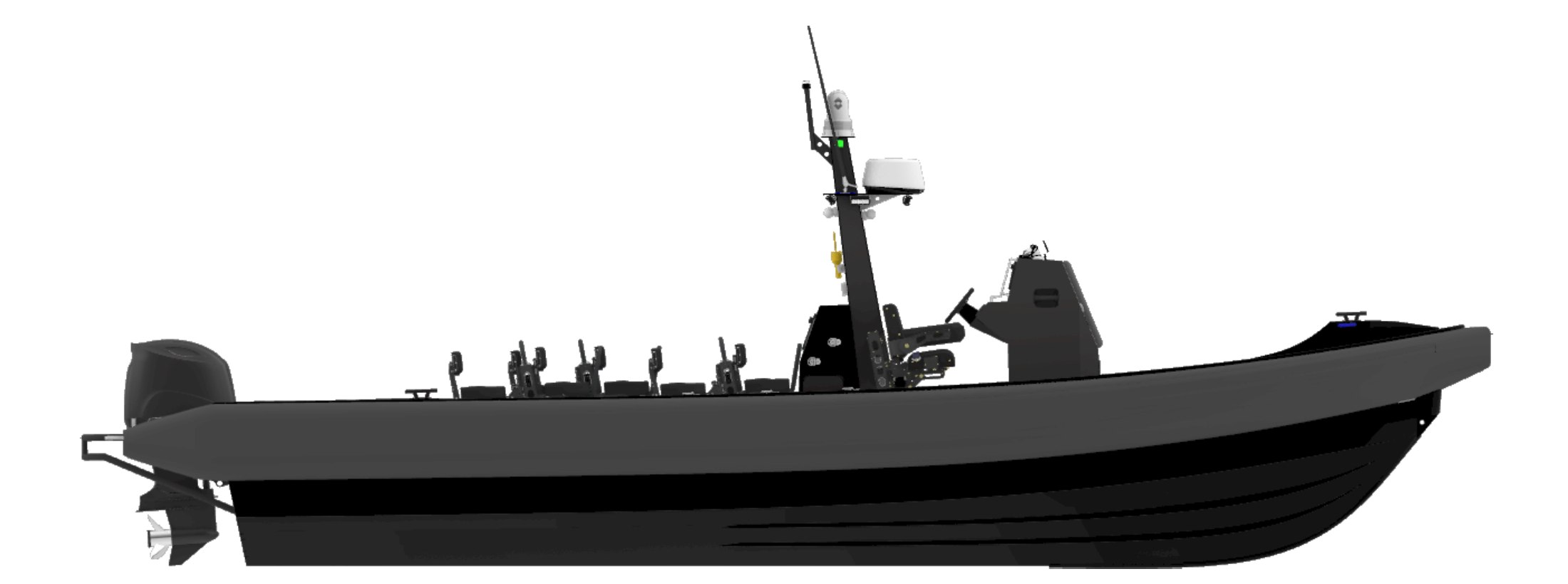
| Lightning | |
| SPECIFICATIONS | |
| Type of vessel: | RIB – Maritime security |
| Operator: | Confidential |
| Designer: | Ultimate Boats, UK |
| Builder: | Ultimate Boats, UK |
| Hull construction material: | Composite |
| Length overall: | 11.5 metres |
| Main engines: | 2 x Suzuki DF350A outboards |
| Radar: | Raymarine |
| Night vision: | Teledyne FLIR |
| Seating: | SHOXS |


